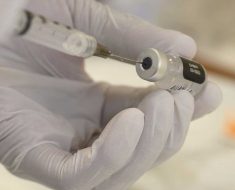An automated cleaning system outperformed manual cleaning of duodenoscopes in a comparative study. The results included measurements of residual proteins and carbohydrates in all duodenoscope working channels and elevators.
The new automated cleaning system, called the MACH 1, can be added to existing reprocessing areas and is about the size of a commercial washing machine. Cleaning alone takes about 30 minutes, and clean plus high-level disinfection (HLD) takes about an hour, according to Michael O’Donnell, MD, who is a gastroenterology fellow at NYU Langone Health.
“Data from prior studies of other automated endoscope reprocessors indicate that MACH 1 more consistently delivers cleaning results that meet or exceed Food and Drug Administration/AAMI (Association for the Advancement of Medical Instrumentation) guidelines,” O’Donnell said in an interview. He presented the study at the annual meeting of the American College of Gastroenterology.
Outbreaks of multidrug resistant organism (MDRO) transmission have been linked to inadequately cleaned duodenoscopes, which has led to greater attention being paid to duodenoscope reprocessing, including prewash, manual cleaning, and disinfection or sterilization, according to O’Donnell. Postmarketing surveillance by duodenoscope manufacturers Fujifilm, Olympus, and Pentax found a contamination rate of 5.4% for any high-concern organisms — far higher than the initially assumed 0.4%.
The researchers used FDA standard maximum allowed contaminant threshold of < 6.4 mcg/cm2 protein and < 2.2 mcg/cm2 carbohydrate. Sampling sites on the duodenoscopes included the elevator wire channel port when present, the biopsy port, the elevator wire channel, the instrument channel, and the elevator recess.
The study included Olympic TJF-Q180V duodenoscopes used in 48 endoscopic retrograde cholangiopancreatography (ERCP) procedures. Each instrument went through standard bedside precleaning; 21 were then cleaned manually by trained technicians following manufacturing instructions, and 27 were cleaned using the automated cleaning system.
In the manually cleaned duodenoscopes, the average level of residual protein was 4.88 mcg/cm2, versus 0.16 mcg/cm2 in the automated clean group. The average carbohydrate residues were 1.09 mcg/cm2 and 0.14 mcg/cm2, respectively. In all, 2 of the 21 manually cleaned devices had protein levels higher than the FDA threshold, versus none in the automated clean group. In addition, 3 of 21 in the manually cleaned group had higher than threshold carbohydrate levels, versus none in the automated clean group. Overall, 4 of the 27 manually cleaned devices and none of the 21 automated clean devices had protein or carbohydrate levels above FDA thresholds.
Removing Variability From Cleaning
The cleaning step is critical because failure to remove bioburden can reduce the efficacy of later HLD or sterilization. Cleaning is typically done manually, but the physical complexity of the duodenoscope makes it challenging to do it thoroughly. Manual cleaning is also susceptible to human error or insufficient training, and an observational study found that at least one error occurred in more than 90% of observed cleaning operations.
The MACH 1 uses turbulent flow and resultant shearing forces to clean the duodenoscope. The device is currently used at the medical device company Parametrik as part of a program that delivers clean duodenoscopes and ultrasound scopes to its customers. The service is currently available only in the New York metro area, but the company intends to expand to other cities in 2022. The company also has plans to sell the MACH 1 in the near future at prices comparable to automated endoscope reprocessors that don’t clean, according to O’Donnell.

Dr Patrick Young
“This is a huge issue, not only practically for patient care, but it’s very much in the public eye. As people who do ERCP, this is a question that patients will come to us with, so we want to be as diligent as possible to drive the bioburden in the scope as low as we can. At least intuitively, that makes sense,” said Patrick Young, MD, who comoderated the session and is a professor of medicine at the Uniformed Services University, Bethesda, Md.
He noted that the system has an advantage in that it can be applied to duodenoscopes already in house. Other approaches to the issue of improperly cleaned duodenoscopes include scopes that can be returned to the manufacturer for cleaning, or removable end cap to facilitate access to difficult to clean parts. And then there are disposal duodenoscopes. “If you’re throwing a scope away every time you use it, you worry about landfill issues and some of the long term effects of that,” said Young.
Perhaps the most important attribute of the automated cleaning device is that it allows the user to eliminate variation in the cleaning procedure. High-reliability organizations aspire to eliminating variability. “This will probably make it easier to be consistent across technicians — for example, maybe there’s one tech that cleans great and one tech that doesn’t. This may take some of that out of the equation and give you a more thorough cleaning regardless of circumstance or personnel working on it. So I think it’s exciting to have another option that might be less costly than buying new scopes,” said Young.
O’Donnell and Young have no relevant financial disclosures.
This article originally appeared on MDedge.com, part of the Medscape Professional Network.
Source: Read Full Article





